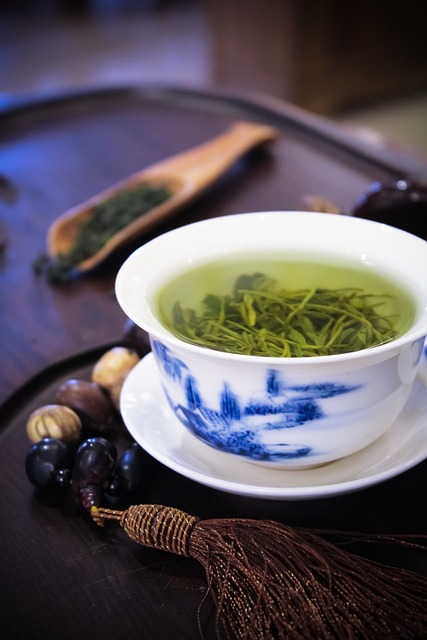Green tea has weathered the test of time in a world where diet fads seem to prevail. This ancient beverage, which is packed with a slew of health benefits, has been utilized for ages in traditional medicine for its therapeutic properties.
But what exactly distinguishes green tea? What happens when it’s combined with amla, another potent, ancient medicinal plant? In this article, we go into the world of green tea and the amla berry to expose their secrets, exposing ten health benefits that will make you want to drink a cup of this elixir every day.

Health benefits of Amla and Green Tea:
Antioxidants are abundant in green tea, and it is well known for its capacity to fight free radicals and protect against chronic diseases. Green tea can help you improve your mental health, improve your cardiovascular health, and help you lose weight. It can help relieve joint pain and prevent certain types of cancer due to its natural anti-inflammatory effects. That’s only the beginning.
Meanwhile, the amla fruit, commonly known as Indian gooseberry, has been shown to be the most potent antioxidant on the planet.
So, if you’re ready to explore the magic of amla and green tea coupled with how it can boost your general well-being, keep reading. From increasing metabolism to supporting healthy skin, amla combined with the botanical power of green tea could be the key to living a better, happier life, whether you drink it first thing in the morning or late in the afternoon.
Amla’s Health Advantages
Amla, commonly known as Indian gooseberry, is a native Indian fruit. Its therapeutic powers have been employed in Ayurvedic medicine for millennia. Amla is high in antioxidants and other nutrients that support healthy skin and hair.
One of the most important advantages of amla is its capacity to improve immunity. According to research, amla can aid in the formation of white blood cells, which are important for battling infections and disorders. Amla is also high in antioxidants, which protect the body from the stress of oxidants and free radical damage.
Another advantage of amla is its anti-inflammatory properties.
Inflammation is the body’s normal response to damage or infection, but persistent inflammation can lead to heart disease, diabetes, and cancer. Amla includes anti-inflammatory chemicals that can aid in the reduction of inflammation and certain disorders.
Amla is high in nutrients and bioactive substances, which contribute to its possible health benefits. Here are some more important health benefits of amla:
Amla has natural sources of vitamin C, with substantially more vitamin C than oranges. Vitamin C is an antioxidant that protects cells from oxidative stress, enhances immunity, and supports healthy skin and hair.
Antioxidant Properties: Amla is high in vitamin C and polyphenols, which can help fight free radicals and reduce oxidative stress. This may reduce the aging process.
Amla’s high vitamin C content can boost the body’s immunological response, allowing it to fight off infections and diseases more efficiently.
Amla is well-known for its digestive properties. It can help with typical digestive problems like constipation and indigestion. Amla also promotes the formation of healthy intestinal flora, which is essential for digestive health.
Heart Health: Some research suggests that amla may help lower bad cholesterol (LDL cholesterol) and blood pressure, lowering the risk of heart disease.
Diabetes Management: Because of its hypoglycemic (blood sugar-lowering) characteristics, amla may help with blood sugar management. It can assist in improving insulin sensitivity and lower the risk of problems in diabetics.
Amla is widely utilized in hair care products and treatments because it is said to strengthen hair follicles, increase hair growth, and minimize hair loss. It can also enhance general hair condition and prevent dandruff.
Amla’s antioxidants can help maintain healthy skin by minimizing oxidative damage, stimulating collagen formation, and avoiding premature aging. Because of its potential benefits, amla-based skincare products are frequently used.

Amla may benefit liver function by protecting it from oxidative stress and aiding the detoxification process.
Anti-Inflammatory: Amla contains anti-inflammatory characteristics that may aid in the relief of symptoms of inflammatory disorders as well as the reduction of joint discomfort and swelling.
Cancer Prevention: Some study suggests that amla’s antioxidant capabilities may help block cancer cell growth, but more research is needed in this area.
The amla berry’s one disadvantage is its highly bitter flavor. This is where combining it with green tea comes in handy, as it transforms the amla into something delightful. It’s also a great drink to have while intermittent fasting.
Health Advantages of Green Tea
This ancient beverage, which is packed with a slew of health benefits, has been utilized for ages in traditional medicine for its therapeutic properties. But what exactly distinguishes green tea?
Here are some of the most important health benefits of drinking green tea:
Green tea has catechins, natural antioxidants that aid in the fight against free radicals. These antioxidants can help minimize oxidative stress and lessen the risk of chronic diseases like cancer.
Green tea has been related to enhanced cardiovascular health. Regular ingestion may aid in the reduction of bad cholesterol (LDL cholesterol), blood pressure, and general cardiovascular function, lowering the risk of heart disease.
Weight Loss: Some research suggests that the components in green tea, particularly catechins and caffeine, can enhance metabolism and fat burning. When paired with a good diet and exercise, this may help with weight management and fat loss.
Green tea includes L-theanine, an amino acid that has soothing effects and may improve cognitive performance. It is frequently eaten to boost alertness and attention while avoiding the jitters associated with high caffeine consumption.
Cancer Prevention: Although more research is needed, some studies have found that antioxidants in green tea, such as EGCG (epigallocatechin gallate), may help suppress cancer cell growth and reduce the risk of certain types of cancers.
Diabetes Management: Green tea has been shown to improve insulin sensitivity and help manage blood sugar levels, which can be advantageous for persons with type 2 diabetes or those at risk of acquiring the condition.
Oral Health: Green tea contains antibacterial characteristics that can help prevent bacteria growth in the mouth. This may result in better oral hygiene and a lower risk of dental disorders such as cavities and gum disease.
Green tea’s antioxidants may protect the skin from the effects of UV radiation damage and promote healthier skin. Some topical products also contain green tea extract, which may have anti-aging properties.
Digestive Health: Green tea has traditionally been used to assist digestion. Its low caffeine level and ingredients that assist digestive processes may help ease digestive disorders such as indigestion and bloating.
Green tea’s mix of L-theanine and caffeine can help reduce stress and anxiety levels so you can relax better.
A Potent Combination of Amla and Green Tea
While green tea has numerous health advantages on its own, the effects are amplified when mixed with amla. Together, amla and green tea form a potent combination that can boost your health without the negative effects associated with green tea.

Immune Boosting Amla and Green Tea
Amla and green tea are both recognized to have immune-boosting qualities. Amla is high in vitamin C, which is necessary for a healthy immune system. In contrast, green tea includes catechins, which have been found to improve immunological function. You may enhance your immune system and avoid disease by including both amla and green tea in your daily routine.
Green Tea and Amla for Weight Loss
Both amla and green tea have been shown to help with weight loss. Amla includes fiber, which can aid in the promotion of satiety and the reduction of hunger sensations. Green tea, on the other hand, can assist in boosting the body’s metabolic rate, resulting in more fat-burning and weight loss.
Drink a cup of green tea with amla juice every day to reap the weight loss advantages of amla and green tea. You may also add amla powder to green tea for an added fiber boost.
Amla and Green Tea for Cardiovascular Health
Amla and green tea can help reduce the risk of heart disease, which is a significant cause of death worldwide.
Both amla and green tea have been shown to improve heart health. Antioxidants in amla can help protect the heart from free radical damage and oxidative stress. Green tea, on the other hand, has been shown to decrease cholesterol and enhance blood flow.
Amla includes antioxidants that can lower blood pressure and cholesterol levels, whilst catechins in green tea aid in preventing blood clot development and promote blood vessel health. You can promote a healthy heart and lower your risk of cardiovascular disease by including amla and green tea in your daily routine.
Drink a cup of green tea with amla juice every day to reap the heart health advantages of amla and green tea. You may also add amla powder to green tea to increase the antioxidant content.
Skin and Hair Benefits of Amla with Green Tea
Amla and green tea are not only good for your internal health but also for your appearance. Amla has anti-aging benefits due to its high vitamin C content, which promotes collagen formation and combats free radicals. Green tea’s antioxidants protect the skin from UV radiation damage and increase skin suppleness. Furthermore, amla and green tea can both stimulate healthy hair growth and prevent hair loss.
Amla includes vitamin C, which is necessary for collagen development, and green tea has antioxidants, which provide protection for your skin from oxidative stress and free radical damage.
Drink a cup of green tea with amla juice every day to reap the skin and hair benefits of amla and green tea. You may also add amla powder to your green tea for a vitamin C boost.
How to Include Amla and Green Tea in Your Routine
It is simple to incorporate amla and green tea into your everyday routine. Begin by using Amla Green or juice in your morning smoothie or by combining it with warm water and honey for a delicious drink. You can replace your ordinary tea or coffee in the morning or afternoon with a cup of Amla Green tea, which contains both amla and green tea.


Amla Powder with Green Tea: A Potent Combination for Improved Health
Finally, when it comes to promoting good health, amla, and green tea are a dynamic combo. These two nutrients have numerous benefits, including increased immunity, weight reduction support, improved heart health, and improved skin and hair.
By combining amla and green tea into your daily routine, you may maximize their benefits and boost your health and well-being. So, why not begin today?
Sip some green tea and sprinkle some amla powder on your breakfast to allow the power of these superfoods to work their magic. Cheers to a happier, healthier you!
